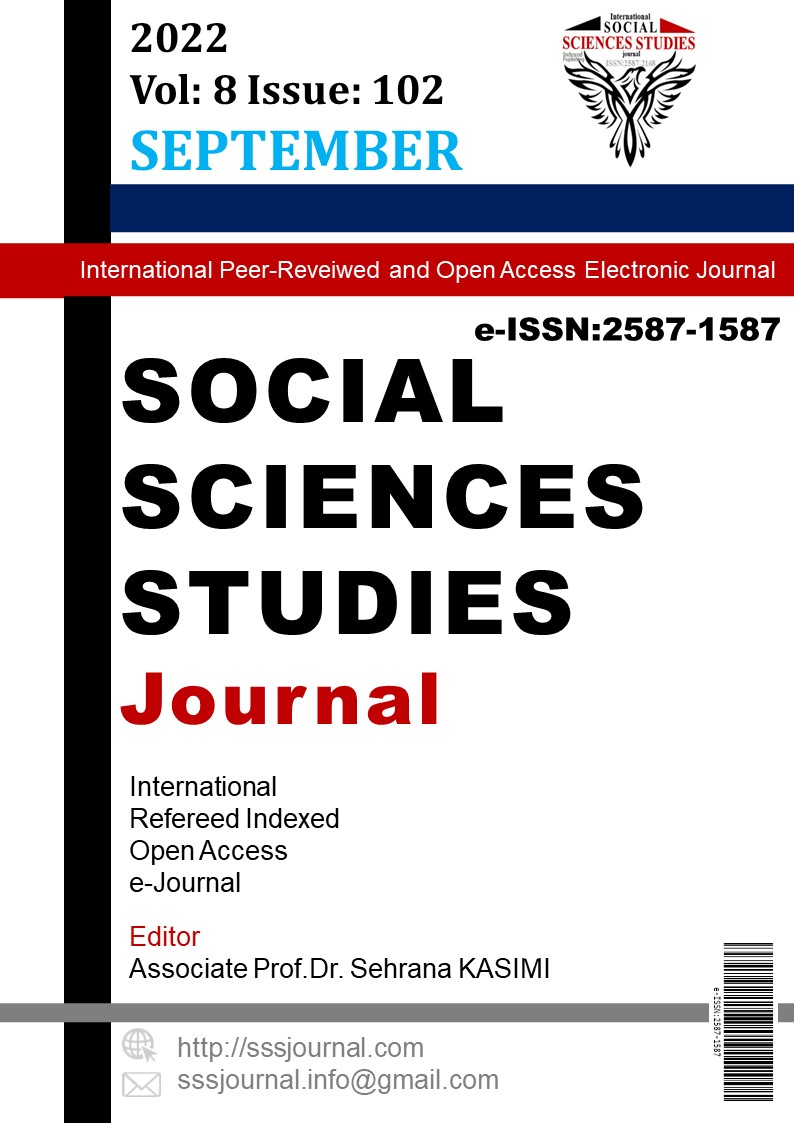Author :
Abstract
Selçuklular, Anadolu'da önemli bir miras bırakmış ve çeşitli yönlerden gelişmesine katkıda bulunmuştur. Mimarlık, özellikle anıtsal yapılarla onların ekonomik ve politik hedeflerini gerçekleştirmelerini sağlayan bir araç haline gelmişti. Bu durumda bina tipolojisi ve himaye belirleyici olmuştu. Anadolu Selçukluları döneminde en yaygın tipolojiler kervansaraylar, medreseler ve camilerdi ve bunların himayesi önemli bir konu haline gelmişti. 13. Yüzyılda ise ise, Selçuklularda mimarinin padişahlardan farklı patronları ortaya çıkmıştı; sultanın aile üyeleri ve askeri bürokratik seçkinler de çeşitli tipolojilerdeki binaları himaye etmeye başlamıştı. Bu makale, Anadolu Selçuklu Mimarisinde farklı türdeki hamiliklerin dönemin mimari üslubunu nasıl şekillendirdiğini ve farklı tipolojilere sahip yapıların inşaasını padişahın, yüksek dereceli bir bürokrat olarak Sadrazam Sahip Ata’nın, ve Sultan'ın aile üyesi olarak eşi Mahperi Huand Hatun’un hamilik yaptığı binalar üzerinden incelemeyi amaçlamaktadır.
Keywords
Abstract
Seljuks left a remarkable legacy in Anatolia and contributed to its development in various aspects. Architecture became a means that allowed them to realize their economic and political goals especially with monumental buildings. In this case, building typology and patronage were decisive. During the reign of Anatolian Seljuks, the most common typologies were caravanserais, madrasas, and mosques and their patronages referred to an important issue. By the thirteenth century, architecture had different patrons than sultans in Seljuks, members of the royal class and the military bureaucratic elite also began to patronize buildings from various typologies. This paper tries to analyze how different kinds of patronage in Anatolian Seljuk Architecture shaped the architectural style of the period and the constructions of the buildings with different typologies patroned by the Sultan, the grand vizier Sahip Ata as a high-degree bureaucrat, and the Sultan’s wife, Mahperi Huand Hatun, as his family member.
Keywords
- 1. Bektaş, Cengiz. (1999). Selçuklu Kervansarayları Anadolu’nun Doğal Yolları. Yapı-Endüstri Merkezi
- 2. Blessing, Patricia. (2014). “Women Patrons in Medieval Anatolia and a Discussion of Māhbarī Khātūn’s Mosque Complex in Kayseri.’’ BELLETEN, 282: 477-526.
- 3. Brend, B. (1975). “The Patronage of Fahrad-din Ali ibn al-Husain and the Work of Kaluk ibn Abdallah in the Development of the Decoration of Portals in Thirteenth Century Anatolia.’’ Kunst des Orients, 10: 160-186.
- 4. Caner, Çağla, and Gökçe Şimşek Kuran. (2006). “Searching Traces of a Donor: Sahip Ata in Seljuk Architecture.’’ 1st International CIB Endorsed METU Postgraduate Conference Built Environment & Information Technologies, 655-669, Ankara.
- 5. Crane, Howard. (1992). “Notes on Saldjuq Architectural Patronage in Thirteenth-Century Anatolia.’’ Journal of the Economic and Social History of the Orient, 26, 1: 1-57.
- 6. Crane, Howard. (1993) “Notes on Saljuq Architectural Patronage in Thirteenth Century Anatolia.’’Journal of the Economic and Social History of the Orient 36, 1: 1-57.
- 8. Güçlüay, Sezgin. (2002). “Anadolu Selçuklu Devleti’nin Ticaret Politikası.” In Türkler Ansiklopedisi, C.7 Ankara. 365-374.
- 9. Karamağaralı, Haluk. (1976). “Kayseri'deki Hunat Camisinin Restitüsyonu ve Hunat Manzumesinin Kronolojisi Hakkında Bazı Mülahazalar.” Ankara Universitesi İlahiyat Fakültesi Dergisi, 21: 199-245.
- 10. Karamağaralı, Haluk. (1982). “Sahip Ata Cami’nin Restitüsyonu Hakkında Bir Deneme.’’ Röleve ve Restorasyon Dergisi, 3: 49-77.
- 12. Kuran, Aptullah. (1969). Anadolu Medreseleri. 1-2. Türk Tarih Kurumu Basımevi, Ankara.
- 13. Ord. Prof. Dr. A. Süheyl Unver Nakishanesi Yorumuyla Divriği Ulucami ve Şifahanesi Taş Bezemeleri, VIII.Turk Tıp Tarihi Kongresi 16-18 Haziran 2004, Sivas-Divriği. Ed. Nil Sari, G. Mesara, N. Colpan,
- 14. Ögel, Selma. (1987). Anadolu Selçuklularının Taş Tezyinatı.Türk Tarih Kurumu Basımevi, Ankara.
- 15. Ögel, Selma. (2008). “The Seljuk Face of Anatolia: Aspects of the Social and Intellectual History of Seljuk Architecture.’’ Foundation for Science Technology and Civilization, : 1-15.
- 16. Önkal, Hakkı. (1996). Anadolu Selçuklu Türbeleri. Atatürk Kültür Merkezi, Ankara.
- 17. Sözen, Metin. (1970). Anadolu Medreseleri, Selçuklu ve Beylikler Devri, (1-2). İstanbul Teknik Üniversitesi
- 18. Tuncer, Orhan Cezmi. (2007). Anadolu Kervan Yolları. Vakıflar Genel Müdürlüğü Yayınları, Ankara.
- 19. Turan, Osman. (1993). Selçuklular Zamanında Türkiye (1071- 1318. Boğaziçi Yayınları, İstanbul.
- 20. Wolper, Ethel Sara. (1995). “The Politics of Patronage: Political Change and the Construction of Dervish Lodges in Sivas.’’ Muqarnas, 12: 39-47.
- 21. Yavaş, Alptekin. (2010). “Anadolu Selçuklu Banilerinin Politik Yaşamlarıyla Mimari Faaliyetleri Arasındaki İlişkiler.’’ TÜBAR XXVIII: 409-417.
